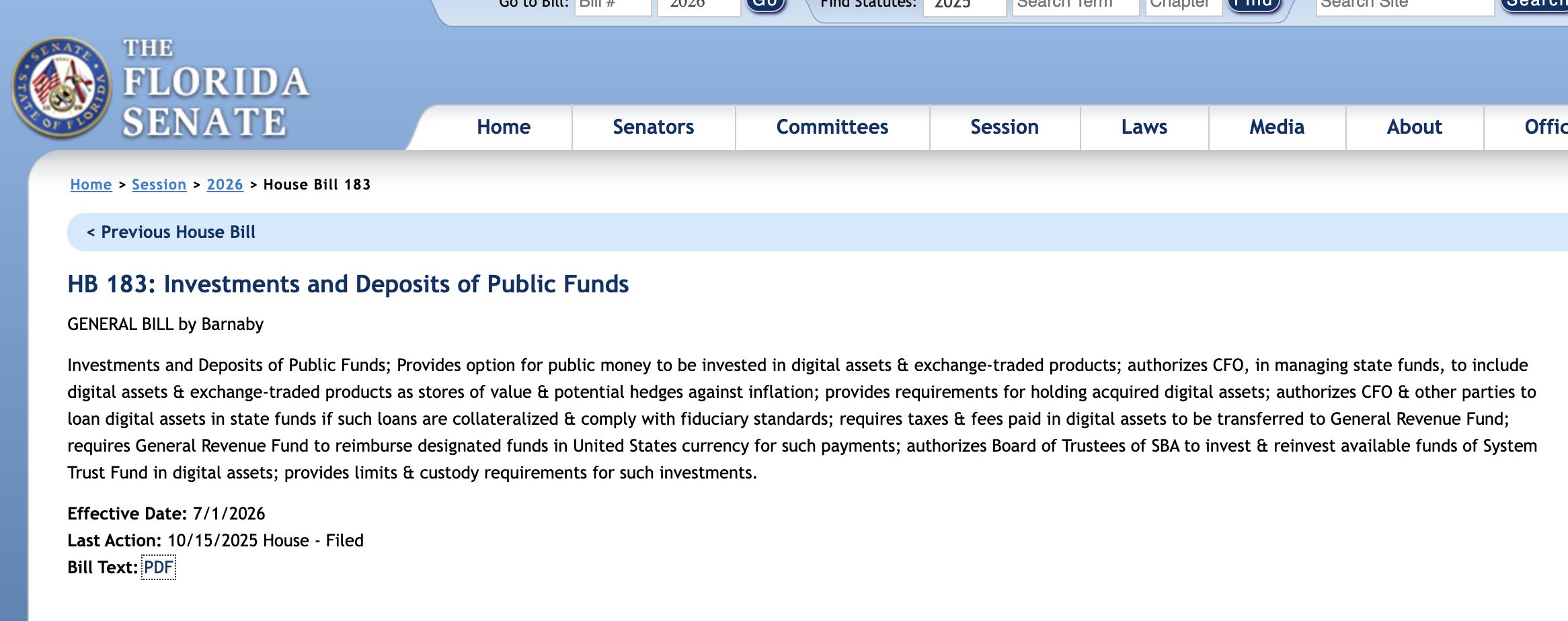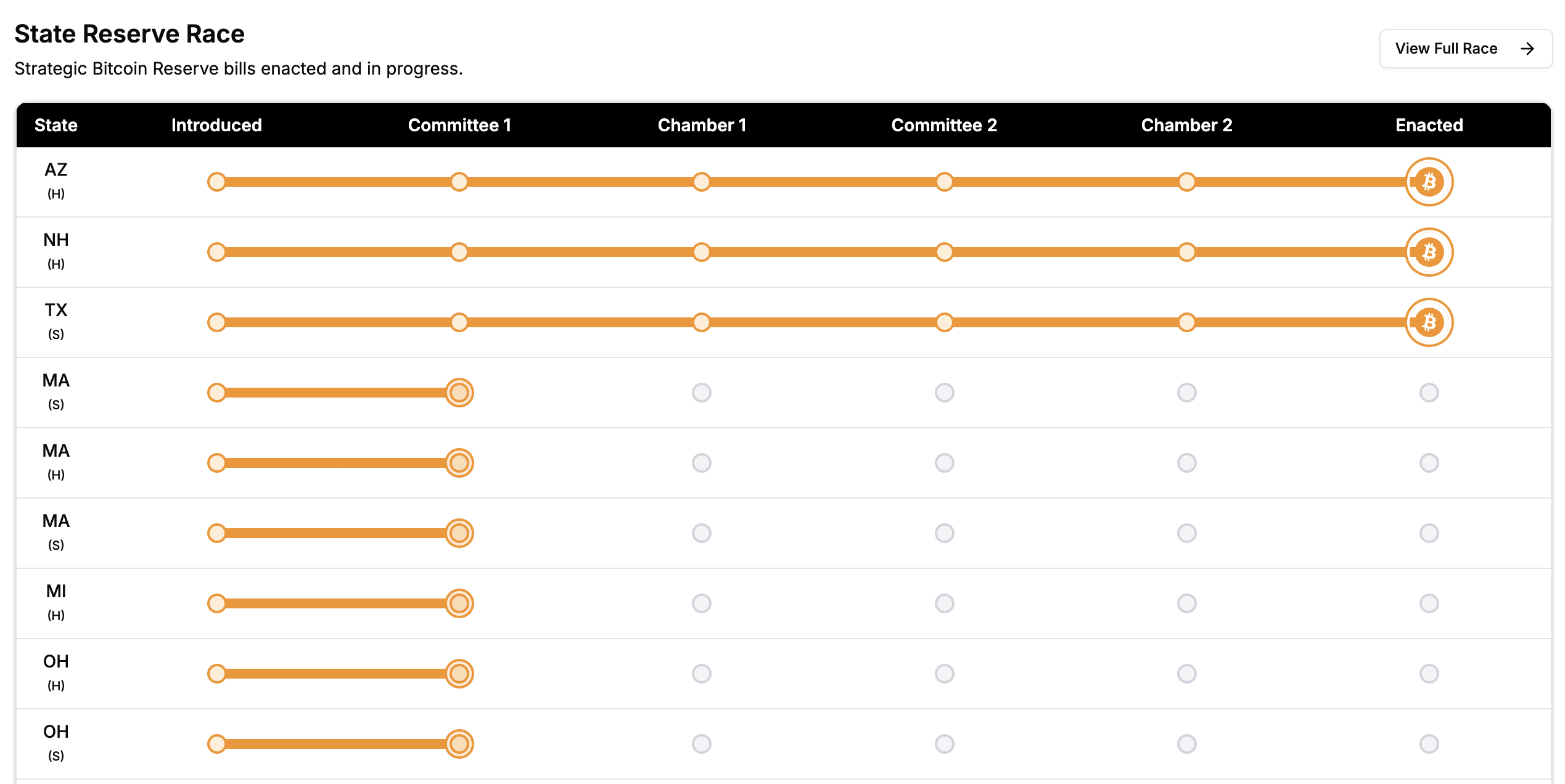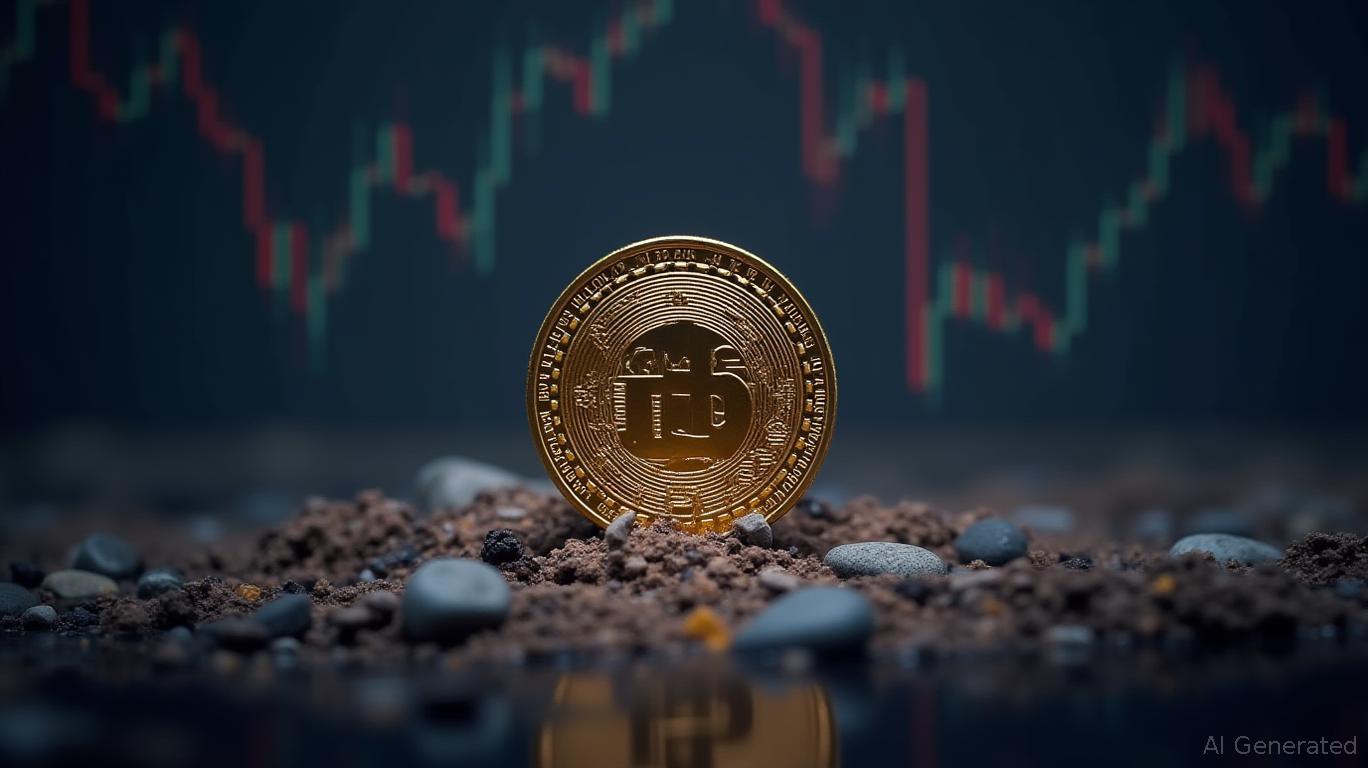Florida Moves to Legalize Bitcoin Investments in State Funds
Florida has introduced HB 183 to authorize Bitcoin investments in public funds, signaling the state’s growing embrace of digital assets and fintech innovation through strong regulatory, financial, and technological frameworks
Florida lawmakers have launched the 2026 legislative session with a proposal to integrate Bitcoin into the state’s official investment strategy.
The measure, filed on October 15, could make Florida one of the first US states to manage digital assets as part of its public reserves.
Lawmakers Push for Crypto Reserve Strategy
The initiative, filed as House Bill 183 by Representative Webster Barnaby, authorizes the state’s Chief Financial Officer to allocate up to 10% of specific funds—including the General Revenue Fund and the Budget Stabilization Fund—into Bitcoin and other digital-asset products.
The bill defines digital assets broadly, encompassing Bitcoin, tokenized securities, and NFTs. It also extends similar authority to the State Board of Administration, allowing the Florida Retirement System to invest up to 10% of its System Trust Fund in digital assets.
 “HB 183” introduced in the state legislature / Source:
Florida Senate
“HB 183” introduced in the state legislature / Source:
Florida Senate
The measure requires strict custody rules, permitting holdings only through the CFO, a licensed custodian, or an SEC-registered ETF. Supporters say this framework ensures compliance with federal standards and institutional-grade security.
“States are seeking to modernize their balance sheets,” said Julian Fahrer, founder of tracking platform Bitcoin Laws.
“More than 50 digital-asset reserve bills have been introduced across the US this year, and Florida is clearly moving early,” he added.
HB 183 also allows residents to pay certain taxes and fees in digital assets. These payments would be automatically converted to US dollars and deposited into state accounts. The bill’s effective date is set for July 1, 2026.
The proposal cites a March 2025 White House executive order establishing a federal “Strategic Bitcoin Reserve,” which uses seized digital assets as part of national holdings. Lawmakers view this as validation for states to explore Bitcoin as a store of value and inflation hedge.
— MartyParty (@martypartymusic)Policy Signal for Wider Adoption
Florida’s move comes as Arizona, New Hampshire, and Texas have already enacted similar frameworks, while others prepare for new sessions in early 2026. Analysts say the momentum could accelerate competition among states seeking to attract digital-finance investment.
 Strategic Bitcoin Reserve bills enacted and in progress / Source:
Bitcoin Laws
Strategic Bitcoin Reserve bills enacted and in progress / Source:
Bitcoin Laws
If approved, HB 183 could mark a shift in public-fund management and inspire further policy innovation. State-level integration of Bitcoin may also create a model for municipal treasuries and pension funds nationwide.
Florida has already positioned itself as a crypto-forward state through a series of pioneering policies. In 2023, the state established the Office of Fintech Policy and launched a Financial Technology Sandbox program in 2025 to test innovative digital finance solutions. These moves have attracted crypto startups and investors, boosting Florida’s standing as a regional fintech hub.
Analysts note that combining these initiatives with HB 183 could amplify Florida’s policy continuity and market appeal. A clear legal framework and pro-innovation stance may accelerate capital inflows and enterprise formation, positioning Florida as one of the most competitive crypto jurisdictions in the United States.
HB 183 now awaits committee hearings in the Florida House before advancing to the Senate for debate.
Disclaimer: The content of this article solely reflects the author's opinion and does not represent the platform in any capacity. This article is not intended to serve as a reference for making investment decisions.
You may also like
BNB News Today: Trump's Clemency Sparks Crypto Market Fluctuations and Fuels Regulatory Discussions
- Trump's pardon of Binance founder CZ Zhao sparks 6% BNB surge and U.S. re-entry speculation. - Critics condemn the move as a conflict of interest, citing Binance’s ties to Trump’s crypto venture. - Binance accelerates Asia expansion via partnerships and $44.2B stablecoin reserves, reinforcing cross-border trading hub status. - BNB’s resilience amid volatility sees analysts project $1,600 targets, though resistance at $1,180 remains a key hurdle. - The pardon highlights shifting crypto regulation under Tr

Cardano News Today: Cardano at $0.68—Will It Surge to $2.70 or Drop to $0.55?
- Cardano (ADA) trades near $0.64, with $0.68 as key resistance for a potential $2.70+ bullish breakout. - Technical analysis highlights wedge patterns and inverse head-and-shoulders formations, with $0.65 as critical reversal level. - Strong community sentiment (83% bullish holders) and domain initiatives support long-term value, though price remains market-dependent. - A $0.68+ breakout could trigger multi-month growth, while breakdown below $0.62 risks retesting $0.55 support. - Institutional ETF applic

Bitcoin Updates Today: Is Bitcoin’s Surge Driven by Institutional Confidence or Pure Speculation?
- Analysts predict Bitcoin's "true bull run" remains ahead, citing institutional adoption, on-chain metrics, and macroeconomic factors despite recent volatility. - Standard Chartered's Geoff Kendrick forecasts $200,000 by 2025, attributing optimism to post-liquidation stabilization and ETF inflows. - PlanB's Stock-to-Flow model shows $55,200 realized price far below current $111,000, indicating no cycle peak with healthy market indicators. - Institutional activity grows: SpaceX's $134M BTC transfer, Tesla'

XRP News Today: XRP Faces $2.60 Battle as Bulls and Bears Clash in the Midst of Regulatory Doubts
- XRP stabilizes near $2.58 as traders focus on $2.60 resistance, a key level for bullish or bearish momentum. - Whale accumulation of 30M XRP and a breakout above a multi-year trendline suggest potential for a $3.00 rally. - SEC delays on XRP ETF approvals and macroeconomic pressures create regulatory and market uncertainty. - Mixed derivatives data and conflicting technical indicators highlight a tug-of-war between bullish and bearish forces.

